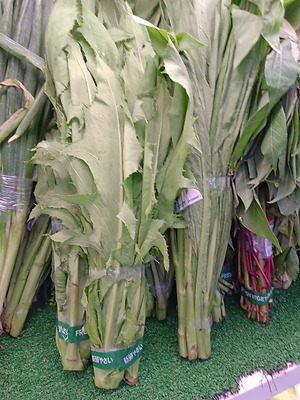


Catalogna di Galatina
Estimated Inventory, 22 lbs : 0
Description/Taste
Catalogna di Galatina has dense toothlike and architectural leaves that envelop white stems growing erectly from their connected base. Catalogna di Galatina's coloring is true of many types of chicory, vivid deep green contrasting with snow white ribs throughout its leaves and stems. The texture is succulent and the flavor, unforgettably bitter, an acquired and appreciated taste that mellows with a simple water bath or cooking. The young leaves also will have a milderflavor than that of more mature Catalogna di Galatina plants.
Seasons/Availability
Catalogna di Galatina can sometimes be found in the late fall and winter months.
Current Facts
Also known as Cicoria, Italian Dandelion and Catalonga Puntarelle di Galatina, Catalogna di Galatina is botanically a part of the Chicorium intybus species and the genus Chicorium. Today Catalogna di Galatina is sold whole predominately in Italy though the tender leaves of Catalonga can also be found sold under the name Puntarelle both in the United States and European countries.
Nutritional Value
Catalogna di Galatina is rich in beta carotene, vitamin C, iron and calcium. It is also known to promote healthy digestion as a result of its intybin content.
Applications
Similar to other chicories Catalogna di Galatina can be prepared both raw and cooked. It works well gently braised or sautéed with a light seasoning of garlic and olive oil. It can also be roasted or grilled. Traditional preparation calls for stalks and greens to be julienned into thin strips and soaked in ice cold water with for thirty minutes. While soaking the slices will soften slightly, curl up and the greens bitter flavor will mellow. Complimentary pairings include olives, bacon, citrus juice, cream based dressings, anchovies, forest mushrooms, gorgonzola or ripening cheeses, garlic, chili oil and balsamic vinegar. To store, wrap in plastic and refrigerate for one to two weeks.
Geography/History
As its name suggests, Catalogna di Galatina is native to Italy where it grows wild and is cultivated. It gets its name from the southern Italian town of Galatina in Puglia where it is believed to have first been grown. In America, Catalogna di Galatina has minimal commercial presence versus other more ubiquitous chicories such as radicchio Chioggia and radicchio Treviso.








